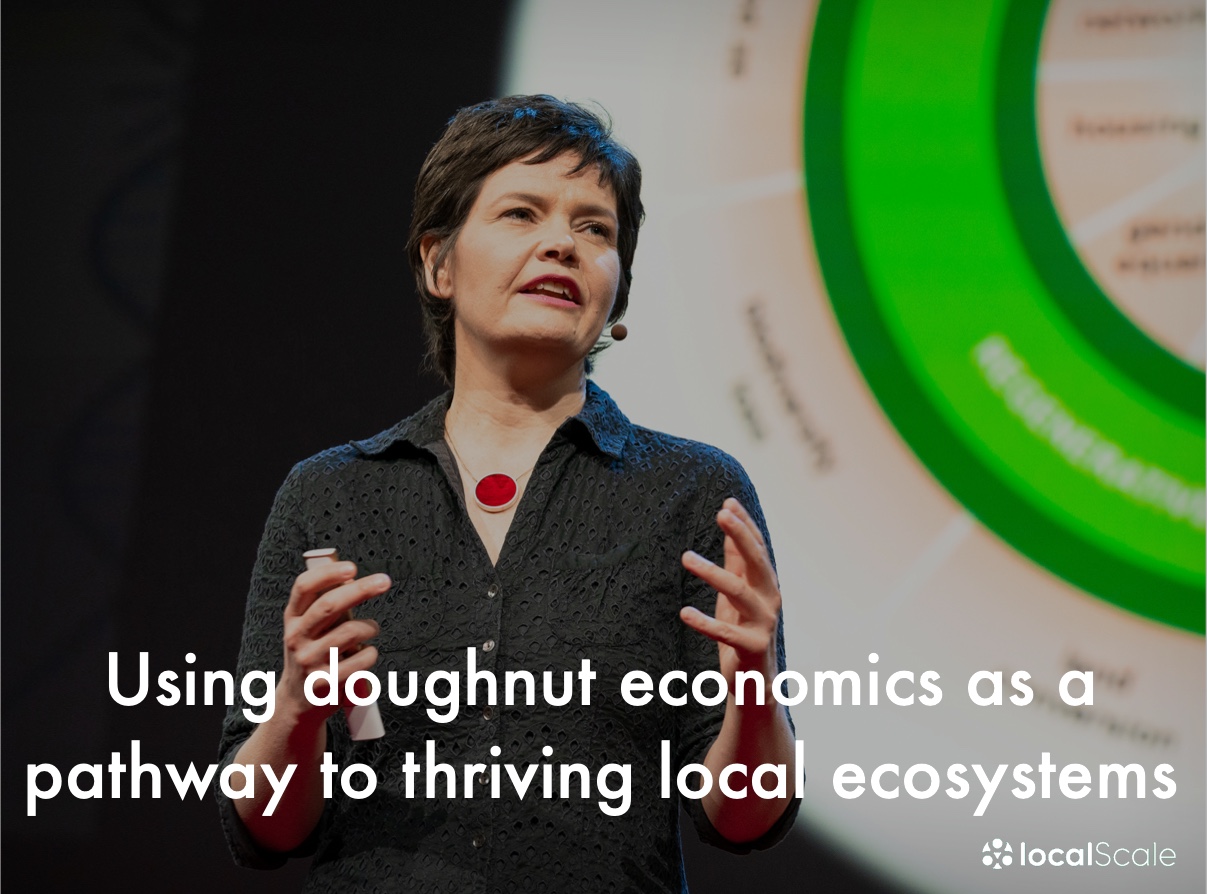What is a bioregion?
- 2020-06-24 06:58:24.0
- 290530
- bioregion
As LocalScale uses bioregions as a fundamental layer of organisational structure in the way it represents human communities and natural ecosystems, it is important to clearly define the concept of bioregion and how it will be used in the platform. According to the ecologists who founded the notion of "bioregion", the term is used to refer to the geographical context as much as to the cognitive context - that is to say, both to a place and to the ideas that have been developed about the ways of life in this particular place. (Berg and Dasmann 1977). As a neologism sometimes used to serve an eco-anarchist political ideology, bioregionalism can also be perceived as an animalist movement defending, in the face of the industrial capitalistic exploitation of environments, an "ecological holism" (a global and inclusive approach to the state of health of ecosystems) according to which the sustainability of any human settlement must go through a fully ecocentric consideration of environments. Landscape architect Robert Thayer synthesized those thoughts 25 years later:
Literally and etymologically speaking, a bioregion is a "life-place" - a unique region that can be defined by natural (more than political) limits, and which has a set of geographical, climatic, hydrological and ecological characteristics capable of accommodating unique human and non-human living communities. Bioregions can be defined both by the geography of the watersheds and by the particular flora and fauna ecosystems they present; they may be associated with recognizable landscapes (for example, particular mountain ranges, grasslands or coastal areas) and with human cultures developing with these regional natural limits and potentials. More importantly, the bioregion is the most logical place and scale for the sustainable and invigorating establishment and entrenchment of a community (Thayer 2003, p. 3).
A bioregion is a land and water territory whose limits are defined not by political boundaries, but by the geographical limits of human communities and ecological systems. Such an area must be large enough to maintain the integrity of the region's biological communities, habitats, and ecosystems; to support important ecological processes, such as nutrient and waste cycling, migration, and steam flow; to meet the habitat requirements of keystone and indicator species; and to include the human communities involved in the management, use, and understanding of biological resources. It must be small enough for local residents to consider it home.
A bioregion would typically embrace thousands to hundreds of thousands of hectares. It may be no bigger than a small watershed or as large as a small state or province. In special cases, a bioregion might span the borders of two or more countries.
A bioregion is also defined by its people. It must have a unique cultural identity and be a place in which local residents have the primary right to determine their own development. This primary right does not, however, imply an absolute right. Rather, it means that the livelihoods, claims, and interests of local communities should be both the starting point and the criteria for regional development and conservation. Within that framework many other state, investor, and other economic interests must be accommodated.
Within a bioregion lies a mosaic of land or aquatic uses. Each patch provides habitats in which different species survive and flourish, and each has its own particular relationship to the region's human population. All the elements of the mosaic are interactive; the management of a watershed affects riverine habitats, farms, estuaries, fisheries, and coral reefs. The components are also dynamic; each changes over time as rivers change course, fallow fields regenerate, storms batter coasts, and fires ravage forests. This dynamism gives a well-managed bioregion the resilience and flexibility to adapt to natural evolution and human-induced activity--be it changing climate or changing markets.
Within this ecological and social framework, governmental, community, corporate, and other private interests share responsiblity for coordinating land-use planning for both public and private land and for defining and implementing development options that will ensure that human needs are met in a sustainable way. Innovative forms of institutional integration and social cooperation are needed to meet these needs. Dialogue among all interests, participatory panning, and great institutional flexibility are essential. A wide range of conservation tools and technologies must also be brought to bear--among them, protected-areas management, ex situ technologies, landscape restoration, and sustainable management of such resources as forests, fisheries, and croplands.
Bibliography
- Berg, P. et Dasmann, R. 1977. « Reinhabiting California », The Ecologist, vol. 7, n° 10, p. 399-401.
- Sale, K. 1985. Dwellers in the Land. The Bioregional Vision, San Francisco : Sierra Book Club.
- Sale, K. 1991. Le regioni della natura. La proposta bioregionalista, Milan : Elèuthera.
- Sale, K. 2019. L?Hypothèse biorégionale. Une habitation terrestre, Marseille : Parenthèses.
- Lawrence F. London, Jr., What is a Bioregion?, 10 May 2000
- Thayer, R. 2003. LifePlace. Bioregional Thought and Practice, Berkeley :University of California Press.


